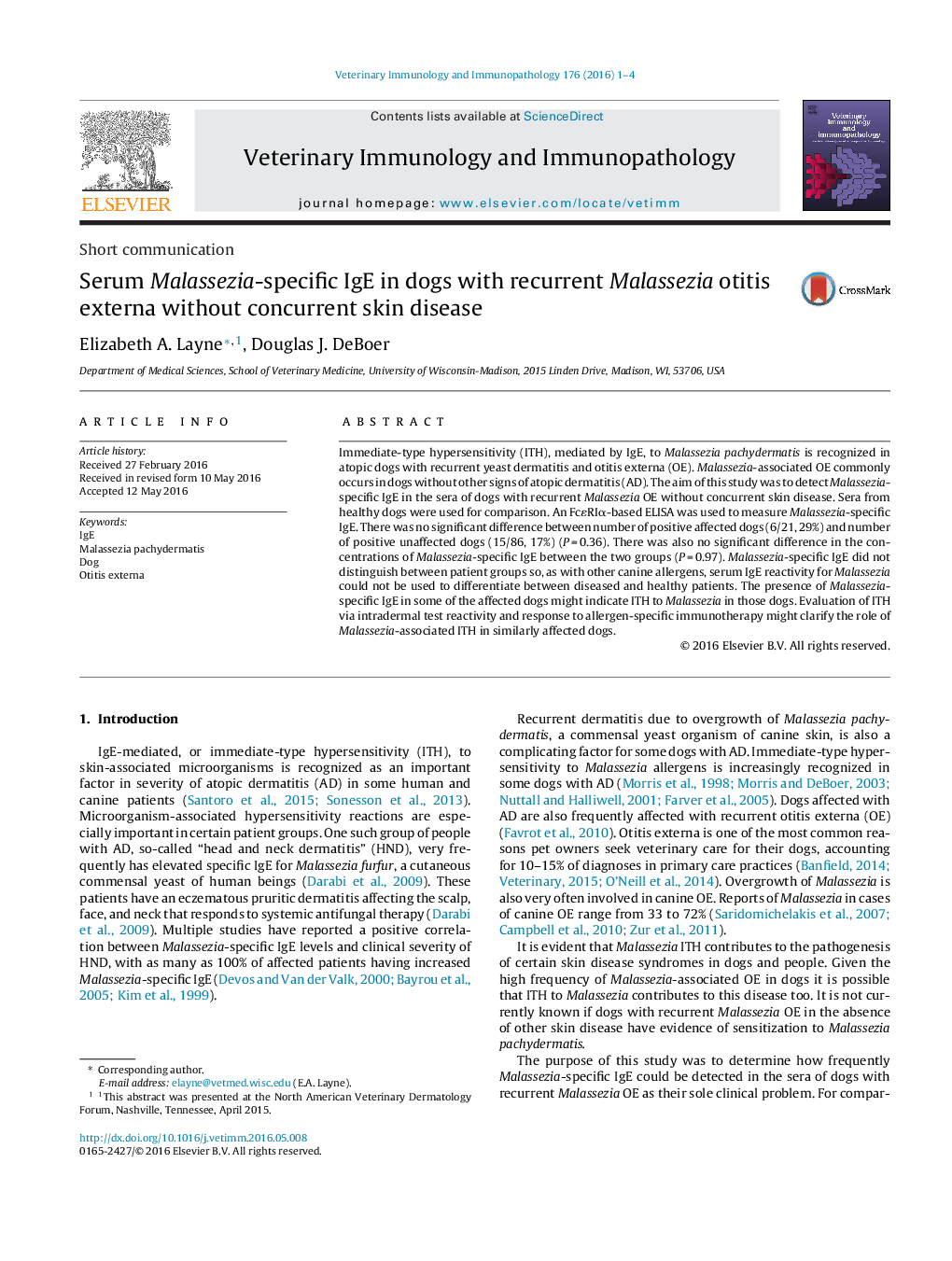| کد مقاله | کد نشریه | سال انتشار | مقاله انگلیسی | نسخه تمام متن |
|---|---|---|---|---|
| 2461325 | 1555008 | 2016 | 4 صفحه PDF | دانلود رایگان |
• Malassezia IgE measured in dogs with recurrent otitis externa and normal dogs.
• 29% affected dogs positive Malassezia IgE.
• No significant difference in number of dogs positive or IgE concentrations.
• Labrador retrievers over-represented in affected dog population.
Immediate-type hypersensitivity (ITH), mediated by IgE, to Malassezia pachydermatis is recognized in atopic dogs with recurrent yeast dermatitis and otitis externa (OE). Malassezia-associated OE commonly occurs in dogs without other signs of atopic dermatitis (AD). The aim of this study was to detect Malassezia-specific IgE in the sera of dogs with recurrent Malassezia OE without concurrent skin disease. Sera from healthy dogs were used for comparison. An FcεRIα-based ELISA was used to measure Malassezia-specific IgE. There was no significant difference between number of positive affected dogs (6/21, 29%) and number of positive unaffected dogs (15/86, 17%) (P = 0.36). There was also no significant difference in the concentrations of Malassezia-specific IgE between the two groups (P = 0.97). Malassezia-specific IgE did not distinguish between patient groups so, as with other canine allergens, serum IgE reactivity for Malassezia could not be used to differentiate between diseased and healthy patients. The presence of Malassezia-specific IgE in some of the affected dogs might indicate ITH to Malassezia in those dogs. Evaluation of ITH via intradermal test reactivity and response to allergen-specific immunotherapy might clarify the role of Malassezia-associated ITH in similarly affected dogs.
Journal: Veterinary Immunology and Immunopathology - Volume 176, August 2016, Pages 1–4
